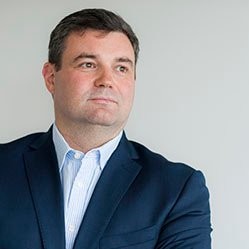In light of the potential for future changes to the Ogden discount rate, for insurers and reinsurers, the implementation of autonomous technology into their reserving practices offers both cost and time benefits, according to Mark Hewitt, creator of the Verisk piCalculator and Founder, Director and Head of Development at Rebmark, a Verisk business.
 In February 2017, then Lord Chancellor and Justice Secretary, Liz Truss, announced a steeper-than-expected cut to the Ogden discount rate from 2.5% to -0.75%. The move surprised much of the UK insurance and reinsurance industry, resulting in many companies announcing profit hits as a result of the change, with the impacts still being felt today by some in the sector.
In February 2017, then Lord Chancellor and Justice Secretary, Liz Truss, announced a steeper-than-expected cut to the Ogden discount rate from 2.5% to -0.75%. The move surprised much of the UK insurance and reinsurance industry, resulting in many companies announcing profit hits as a result of the change, with the impacts still being felt today by some in the sector.
Amid backlash from the insurance and reinsurance industry, the UK government announced in March this year that it would introduce a new Civil Liability Bill into the House of Lords, designed to address needed reforms to both the Ogden discount rate and whiplash claims.
While there remains no definitive timeline for the bill to pass into law, it could happen early next year, which means that by the end of 2019, a new Ogden rate could be in effect, meaning insurers and reinsurers might again need to adjust their reserves.
In light of potential reforms, Reinsurance News spoke with Mark Hewitt, creator of the Verisk piCalculator, an all-in-one software solution that handles all calculations in the injury claims process.
While current methods exist for calculating reserves regarding the Ogden rate, Hewitt explained how currently, it is only possible to get a handle on the change using sampling methods which may not actually be representative of the actual claims.
“It is too time consuming to review all claims – however, using piCalculator, it is possible to get a position on every claim – reducing the risk that insurers are over or under reserving,” said Hewitt.
Interestingly, Verisk recently announced the release of the latest, updated version of its piCalculator, designed to provide further insights by allowing users to run multiple claims scenarios, which will help organisations maintain appropriate reserves while maximising profitability.
By implementing autonomous technology, such as the piCalculator, into their reserving practices, re/insurers can achieve both a time and cost benefit, explained Hewitt.
“It is a costly exercise to recalculate all reserves for a new discount rate – both internal claims handlers and external legal suppliers. Secondly, actuaries can have a better handle on the impact in a shorter timeframe without having to wait for a revaluation exercise,” said Hewitt.
He continued to note that calculating head of loss for all types of personal injury claims is so complex and time-consuming, that companies typically only do it every six months as regulation requires. However, if firms could perform these complex calculations quickly and at the push of a button, it can be done more frequently, such has monthly or quarterly, which, has its benefits.
“Actuaries are better placed to answer the “what-if” questions across their entire book of claims allowing them to react to subtle changes in the distribution of their claims – for example, if there is an influx in catastrophic claims involving younger drivers, this would be affected more by a discount rate change than if the claims shifted towards an older age range,” explained Hewitt.
Hewitt concluded that ultimately, “if reserves are better controlled and costs can be reduced, the re/insurer can deliver a combination of better returns and lower expenses – this can be either returned to shareholders in the form of increased profits or to lower premiums.”


